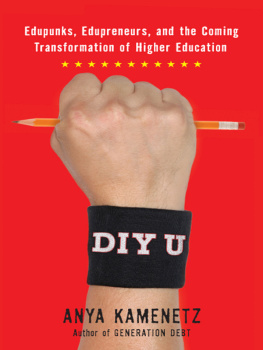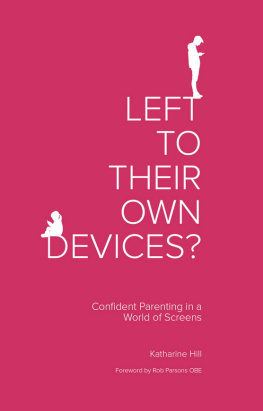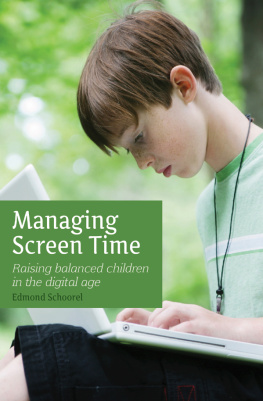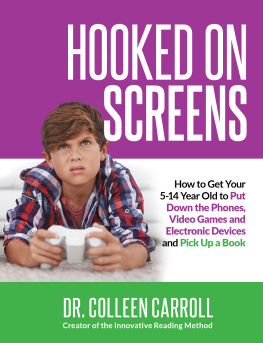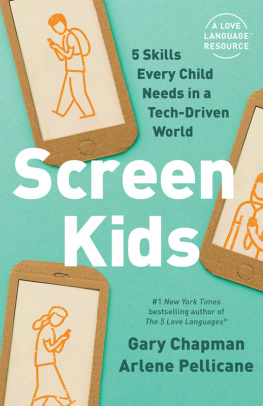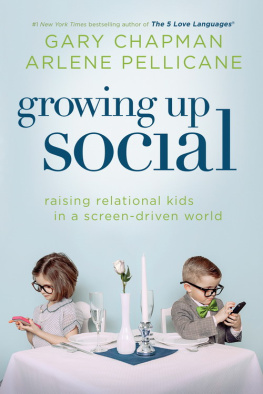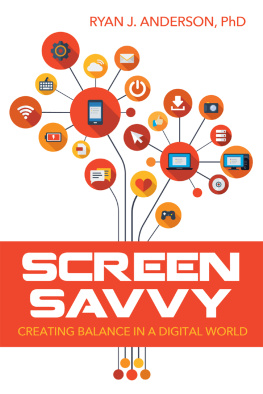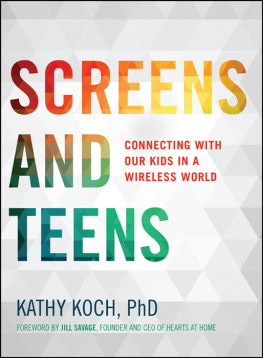T HANKS TO MY EDITOR, B ENJAMIN A DAMS, FOR TAKING ME TO LUNCH TO TALK about the next book. It has been such a delight working with him and the team at PublicAffairs a second time.
Jim Levine has been everything you could want in an agent.
Thanks to my teammates at NPR Ed past and presentSteve Drummond, LA Johnson, Lauren Migaki, Elissa Nadworny, Claudio Sanchez, Cory Turner, Eric Westervelt, and Sami Yenigun. You inspire me every day, and your support helped make this possible. Special thanks to Pamela Hurst-Della Pietra and her organization Children and Screens: Institute of Digital Media and Child Development, as well as to Carnegie Mellon University, for help and support with this research.
This book stands on the shoulders of so many amazing researchers and thinkers, many of whom are also, and not incidentally, mothers. Thank you thank you, danah boyd, Justine Cassell, Sonia Livingstone, Alicia Blum-Ross, Mimi Ito, Mitchel Resnick, Kathy Hirsh-Pasek, and so many more. And to the whole motherboard!
All gratitude and a bowl of soup to Adam, my partner in parenting and in life.
And thanks to Lulu, for being herself.
Y OU PICKED UP THIS BOOK BECAUSE YOU ARE CURIOUS, AND LETS FACE IT, A little anxious about kids and screens. I am too. I wrote it to help us both get past that anxiety. To cut the guilt, turn down the volume, tune out the noise, and look deeper. Then were going to make a plan.
But first, a story.
Late one night in the early 1980s, I was a towheaded little girl in a nightgown perched on the foot of my parents bed watching TV. The screen showed a towheaded little girl in a nightgown, perched at the foot of her parents bed, watching TV.
On the television within the television, the credits rolled. The parents were dozing. My parents were dozing. The broadcast day ended on the televised television. The national anthem played over a shot of the American flag. The little girl scootched closer to the screen. I scootched closer to the screen.
Then a terrifying mass of green ectoplasm burst out of the screen within the screen. The movie was Poltergeist (1982).
In that moment was born a lifetime phobia.
Not of ghosts. I love ghosts. I even went through a middle school seance phase, appropriate to the bayous of South Louisiana where I was reared. No, I was deathly afraid of closing credits. The fear has faded over time, but to this day, when a movie ends I prefer to hustle up the aisle. When a TV episode is over I have to minimize the window before the Netflix countdown gets to the next episode.
A quarter century later, my older daughters introduction to inappropriate content came on the potty. We had tried everything we could think of to get a toddler to sit down long enough to go number two. And as suggested by a number of other parents, the only bribe that really worked was the offer of a short video on our phones.
We found plenty of kiddie-approved potty training material on YouTube: a catchy ditty about washing your hands from PBSs Daniel Tigers Neighborhood; a nice instructional skit from Elmo; a hyperenthusiastic Japanese-speaking panda. Then one day, I happened to click on a five-minute cartoon. It was called Potty Training. It had millions of views.
It turned out to be an episode of an incredibly filthy, obnoxious cartoon web series, apparently intended for dimwitted adolescents. My daughter loved it, of course, and asked for it again and again.
A quarter century from now, my daughters may be raising kids of their own. If the forecasters are to be believed, well all be plunged into a gently glowing alphabet soup of AR, VR, AI, MR, and IoTaugmented reality, virtual reality, artificial intelligence, mixed reality, and the Internet of Things. Well be inhabiting the bodies of avatars 24/7, exchanging GIFs with our sentient refrigerators, and using virtual assistants to ward off telemarketing bots. Digital experiences will be so immersive and pervasive that Yellowstone National Park will look like todays Times Square. By then the existence of screens as separate entities, with borders and off buttons, will be a quaint, half-remembered state of affairs.
The terrified little girl inside me asks: How worried should we really be about kids and tech? Where is all of this heading? And what should we actually do about itnow, in the real world, a phrase that as of the early twenty-first century still has some meaning?
These questions have resulted in the book youre reading. Its a book that I wish Id had when my firstborn daughter arrived: a clear, deeply researched, and nonjudgmental take on an issue that faces nearly every parent today. I hope it will be a good resource for you as, together, we try to navigate the rocky shoals between fear and hype and untangle the growing role of digital media in our family lives, and in our lives, period.
Im not presenting myself to you as an unassailable expert. Im just a parent, one with a solid research toolbox, trying to work this stuff out as best I can. Ive been writing about education and technology for over a decade. I became a parent in 2011. I belong to the first generation of parents who grew up with the Internet. And Im now raising two members of the first generation growing up with screens literally at their fingertips.
years.
spend as much time daily with electronic media as on any other waking activityincluding school.
Astonishing. But so what?
As parents, we find ourselves without traditions or folk wisdomor, crucially, enough relevant scientific evidencein answering that question. Traditional authorities, covering for real gaps in knowledge, fall back on tired tropes.
I think the self-proclaimed experts have let us down in our attempt to make sense of this incredible new reality. In the absence of Grandmas advice or a wealth of up-to-date research studies, the source of knowledge that we consult to resolve not only these conflicts, but seemingly every question and hiccup in our childrens lives and our own, is, ironically, the Internet. Dr. Google is the new Dr. Spock.


